What is a Mesquite Tree?
Mesquite Trees, sometimes referred to as ‘Devil Trees,’ are native to Southwestern America, and can be a great resource if you know how to use them. Mesquite trees cover over 100 million acres of land in the United States, with over 50% of that in Western Texas.
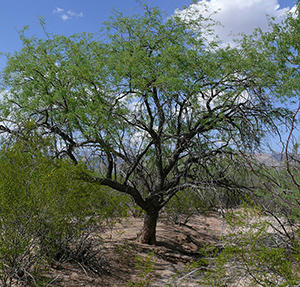
These trees range in size from small shrubs to as much as fifty feet tall, depending on their location and conditions. Their spread is usually directly correlated to their height, so that a four-foot tree will have a four-foot spread, and a fifty-foot tree will have a fifty-foot spread.
The mesquite tree’s bark varies from a yellowish color to a reddish-brown hue, and is quite rough and hardy in texture. The leaves are delicate and fern-like, but the base of the leaf stems is covered in long, sharp thorns.
During the spring fluffy, frothy clusters of flowers bloom. These are usually a pale yellow or green shade.
During the fall, mesquite trees grow long, tubular pods that contain beans. These beans are edible, and that’s the real point of today’s article.
The History of The Mesquite Tree and Its Beans
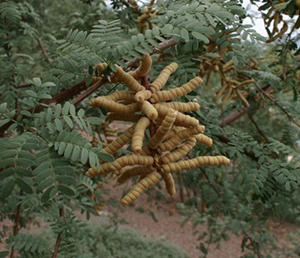 Mesquite pods and beans are some of the oldest known foods of prehistoric North American people.
Mesquite pods and beans are some of the oldest known foods of prehistoric North American people.
Native Americans used the entire tree, crafting sewing needles from the thorns, bows and arrows from the wood, baskets from the bark, black dye from the sap, healing tea from the pods, and food from the beans.
That herbal tea was said to remedy colds, diarrhea, dysentery, the flu, measles, pink-eye, stomach-ache, sore throats, and various wounds.
Pioneers later used the wood to build wagon wheels, furniture, fence posts, wooden walkways, and campfires. The beans were referred to as “manna from heaven” and men would often roast or boil them to eat. During the Civil War, soldiers used roasted and ground mesquite beans as a coffee substitute.
Related: How To Make Your Own Herbal Tincture
How to Grow Mesquite Trees
Mesquite trees can often be harvested from the desert, requiring no real work on your behalf, or they can be grown on your land as a domesticated tree.
You can grow these plants from seeds or sprouts, or you may purchase young trees from a reputable nursery. Mesquite trees fix nitrogen in the soil, as legumes do, and will not need supplemental nitrogen or minerals provided.
For Seeds
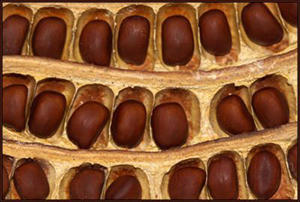 Germination occurs when the temperature is between 80 and 85 degrees Fahrenheit, in soil that is not overly sandy or moist.
Germination occurs when the temperature is between 80 and 85 degrees Fahrenheit, in soil that is not overly sandy or moist.
Place the seeds in your desired location, and dust them with topsoil. Consistently water the seeds until they sprout, either via rainstorms or with a watering bucket.
After the seed sprouts they’ll do better in drier and slightly hotter conditions, preferably around 90 degrees Fahrenheit.
For Saplings
Dig a hole that is twice as wide, and as deep, as the roots. Fill the hole to the top with water, then leave it for about thirty minutes and check how it’s draining. If some water remains, you need to add about three to five inches of sand or small rocks to the bottom of the hole to assist with drainage.
Place the sapling in the hole, and fill it back in with soil. Keep the soil around the tree moist for the first sixty days, to help it better establish itself.
After this 60 day period your mesquite tree will not require you to water it anymore, unless you undergo a severe drought. This tree is a desert native and will drink up any and all water available to it. If you continue to overwater your tree, it will grow quickly but have weak wood.
Surviving Winter
If you live in zones 6 through 9, you won’t need to do any additional work to keep your mesquite tree alive during the winter months. If you live in zone 5 or below, you will have more work to do.
To overwinter a mesquite tree, it’s best to mulch your tree heavily, wrap it up in burlap, and do what you can to protect it from harsh winds.
Mesquite trees do not do well in planters or pots, as they require a long taproot and root system. Because of this, they aren’t capable of being brought indoors, unless you wish to keep them as a small shrub-sized tree.
Related: Top 10 Foods to Grow for Survival
How to Harvest and Store Mesquite Beans
Seed pods are ripe when they are dry and brittle during June, July, August, and September.
Pick the pods directly from the branches, rather than the ground, to avoid contamination by bacteria and insects.
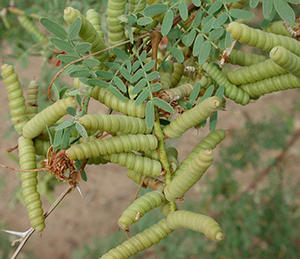
If you’re picking from wild mesquite trees (rather than a tree you raised), it’s advised that you taste the beans of each tree, to avoid the bitter beans. Even though the trees look alike and grow together, their flavorings can wildly differ. A good mesquite bean is sweet and resembles a candy in its taste.
To store your mesquite pods and beans, you must first dehydrate them. To dehydrate mesquite beans, you can lay them out in the sun for a day or two, or stick them in the oven at 150-175 degrees Fahrenheit, until they are dry and brittle.
Once dehydrated, store in a cool, dry place. Freezers are an excellent storage solution. It’s best if your storage container is ‘breathable’.
How to Fix and Serve Mesquite Beans
Mesquite beans have a sweet (like a combination of malt, mocha, cinnamon, and vanilla), nutty-like flavor, contain significant amounts of fiber, minerals, and protein, and are gluten-free.
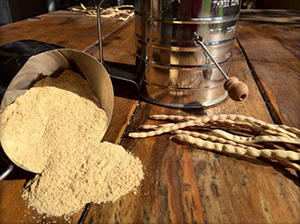
Syrup
Use the syrup to sweeten anything you would typically put syrup on, such as pancakes, waffles, ice cream, or as a glaze on chicken or pork.
Syrup can also be used to brew a unique craft beer.
Related: Trees That Can Be Tapped For Sap And Syrup
Jelly
Treat the jelly as you would any other, spreading it on biscuits, crackers, toast, and more.
Flour
Mesquite flour can be used to make tortillas, waffles, pancakes, cornbread, cookies, bread, banana bread, zucchini bread, muffins, fruit cakes, and more. Native Americans mixed the ground meal with a little water to form small, round cakes. They would eat them raw, fry them like mush or used them to thicken stews.
Mesquite flour is used to make a refreshing drink. If allowed to ferment, a mixture of water and mesquite flour produces a fizzy alcoholic drink.
You can also add a tablespoon or two of mesquite flour to your coffee or tea for a shot of flavor.
Mesquite trees are unique, handy sources of food and flavor. Harvest them from a nearby desert, or grow your own to have your own unlimited supply of sweet mesquite beans!
You may also like:
 The Only 6 Seeds You Need to Stockpile for a Crisis
The Only 6 Seeds You Need to Stockpile for a Crisis
How to Build a 44-Day Stockpile for Only $2.40 a Day (Video)
DIY Mini Greenhouse For Year-Round Vegetables

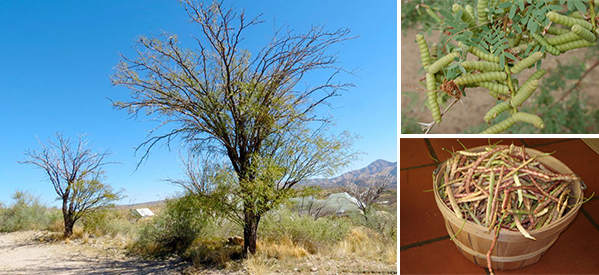













after reading this artificial I want to grow one in my back yard I read the whole artificial with fascinating interest
that’s great but the root system will grow 3 times the height of the tree and will seek out water including busting sewer and waterlines. The most unwanted and hardest to kill tree in the southwest.
Ouch! Mine is very near my underground irrigation pipe.
Why kill it? Any bush will clog a sewer line, but not all trees make nitrogen for the garden, either. The old-ones always had it in their fields. niio
Unless you’re a rancher. Leaves have the same feed value as clover. Get cattle, horses, or goats to eat it, and they’ll decimate the trees. If deer hunting, you can tell how many are in the area by how much the trees are fed on. This, not maize corn, was queen of the crops in the Southwest and Mexico. Plan chilis under it because that’s where you find the wild ones, under mesquite trees. niio
Are you going to grow a real one, or an artificial one?
Don’t grow one where you will be driving. Lawn mowers and vehicles will get flat tires all the time. Keep branches picked up and weed eat around them instead.
Quite interesting. At the present, we don’t have the proper place for growing but hope too in the near future.
It is amazing to learn all the different food you can get and what all you can do with the offerings of this tree.
Mesquite is hands down the best wood to barbque with. Nothing like a steak cooked on mesquite! Great article, thank you. It brings back fond memories of the Arizona desert.
Mesquite is hands down the best wood to barbeque with! Nothing like a steak grilled over Mesquite. Great article, thank you. Brings back fond memories of the Arizona desert.
Anney: I mean no disrespect, but Hickory is known throughout the South as the wood of choice for great barbeque.
Not in Texas, it is the wood of choice for BBQ. You can’t do a Texas brisket without it. And what is even better, if you know a rancher or farmer, they will let you cut them down for free.
That’s because Hickory is grown in the southeast, where there probably are no Mesquite trees. I agree with Anney. Hickory smoked or bbq’d meat is delicious, but the Mesquite—Wow!
Susie: mesquite grows in Louisiana, so it may spread into the rest of the southeast. It was carried there by cattlemen rafting Longhorns into the state. niio
Anney: Viva Arizona! Not a day goes by I don’t thank God He brought me back. The mesquite bloomed well, very well, in fact. that’s good eating, very sweet. And, god love us, we’ll have a wet year, 16 or 20 inches of rain in 2022! That will make the mesquite bloom again. For the old-timers, was the queen of the gardens, not maize. We have it planted all thru the gardens for food, nitrogen, and shade. niio!
Make sure that no matter how you use the beans/seeds, that cooking is involved. Here’s why:
“…they contain an enzyme that inhibits conversion of proteins to amino acids so although they are not toxic and eating one or two won’t harm you I wouldn’t recommend eating them raw on a regular basis or in any quantity unless they have been cooked, because heat denatures enzymes…”
Keep in mind, you should only consume the beans/seeds of the mesquite tree after cooking them.
“…they contain an enzyme that inhibits conversion of proteins to amino acids so although they are not toxic and eating one or two won’t harm you I wouldn’t recommend eating them on a regular basis or in any quantity unless they have been cooked, because heat denatures enzymes…”
Thank you for including information relate-able to the desert southwest.
The wood also is beautiful. You can make beautiful bowls and other kitchen implements from it….. Jerry (in Tucson)
I am 64 years old how long from seed to beans ? I live in central florida zone9
I’m in Arizona, Zone 9, and I have 2-3 years old trees that bloomed. Get yours from Louisiana, where they adapted to being swamp critters. In AZ, it was traditional to plant them on the sides of irrigation canals. A ton of hair roots held dirt walls in place, and added nitrogen to the water. niio
Before you all get too excited this tree is a dirty DIRTY tree!! It’s always dropping something! They are ugly high maintenance and shap! I’m truly blessed to have these “weeds” all around me in this hell hole I call home”ARIZONA “!!
this is zone 9, north of Tucson. This tree has always been the queen of the gardens, not maize. So what if it’s always dropping something? Plant chilis under it. that’s where you find chiltepin in the brush, under mesquite. They still find ancient irrigation canals by following buried mesquite stumps and even brush. niio
Depending on soil, rainfall, and climate, deploying most kinds of trees requires at least 10 years from sprout to something mature enough to provide the first real nut or fruit harvests. Your mileage WILL vary.
E.g., Southern landowners who ‘crop’ the various kinds of softwood pines must plant circa 12 defined huge tracts in staggered tranches. After a plot gets harvested, it is immediately replanted with sprouts of whatever wood thought likely to be in demand some 10-12 years hence.
Farming trees for wood is a generational project. Best thing to do, if you live in or near an area which has tree-nut orchards (pecan, walnut, hickory, almond, etc.) which actually yield for harvests is to go talk to those owners.
Locusts trees also have edible beans in long pods. They have longer and harder thorns. And I live where it easily gets -10 or -20 on a winter night. It’s high mountain desert here in New Mexico. Locust wood is also good for fence posts. I haven’t cooked with it. I do like mesquite for a good steak.
we burned locust for years. hardest hottest fires you can imagine will dull a chainsaw in two medium size trees cutting them down
Not a botanist myself. American Indians have ‘institutional knowledge’ about which plants have nutritional value.
Not a botanist myself.
American Indians have institutional knowledge’ about the nutritional value. They also have long harvested pine nuts and made a kind of flour from them.
Hey thats me! I grew up out here that and an oak and youre good to go.
My Grandfather was over 100 yrs old and walked the Deserts of Texas New Mexico Arizona and California.
We didnt grow these just picked them. LOL we didnt wait we just went to the next one.
It os funny and this is what I tell my son. As we watch the myriad of “expert” survivalist on TV there is one in particular I wont say the show dont want to wmbarrass the person.
“Dad that guy seems kind of braggy and doesn’t listen to anyone?”
“Yes son he is missing the two most important things about surviving. 1 His stubbornness and he fails to work with his team
2. He doesnt help and criticizes unnecessarily which brings the group down.
3 He has forgotten the most important thing of all put your team first.
This is why in some of the most harsh enviroments on the planet your family has survived. When the We is greater than the Me everyone benefits. When the Me is greater than the We then you might do well for the moment but in the end everyone will fail. I mean everyone.
The proof is in front of you Me! We didnt have a helicopter to save us or some team. If you didnt find water you died. If you didnt find food you died.
The fact is if everyone puts everyone else first no one goes hungry no one goes thirstt and work is much easier.
Yeah, there’s one ‘survivalist’ named Bear Grylls who not only takes unnecessary risks for camera-drama but also encourages others to do so.
Survivalism is not only about material prepping, but also having pre-gained -prepped- knowledge. One way to do that is via real ‘field trips’ with persons already learned in ad-hoc provisioning. That means venturing out with only tools and quiet weapons, and with initial water and water-treatment means.
100% an individual, and 100% into the ‘tribe’. niio!
I was on amazon and there seems to be more than one kind, what is the one in the article as another person commented I am 63 how long to reach mean stage?
What area of country do you live ? Find what is good there and grow it or hint a bush. Or tree bring it home LOL.
Adapt go with what works best find your local native used and use that
We have honey, western honey, screw beans, and velvet mesquites. Velvet is the sweetest. Julian, which doesn’t like out cold bitter winters (it can get down to 25F, no, I swear it! 🙂 is bitter. Peruvian tastes like chalk. niio
First step to prepping is to relocate (if at all possible) from urban and suburban zones.
Hunkering down in a place next to a nuclear-war target, an earthquake or flood zone, or on a coastline prone to hurricanes, all also contraindicated.
Food-bearing trees in any real number also unlikely found in urban zones.
It’s the best tree in the garden. Food, light shade, and nitrogen. this year it’s giving twice as much as last year. I added a little sulfur to the ground under the tree last fall and again this summer to break up caliche. Not too much because the tree needs bacteria to fix nitrogen, but, sulfur also controls cotton root rot, which will kill about anything by cutting back on the Ph (ours is 8+ thanks to all the caliche). Nothing roots thru caliche, not even when dying of thirst.
Got to get to Desert Harvesters and their hammer mill in Tucson to have mine milled. They’re so loaded with sugar this year, they will not go thru the grein mill, but gum it up. At this time, there’s literally a ton of honey mexquite down in the brush, and this year, no sign of beatles in the pods.
If you have livestock, they can be trained to eat the leaves. Cathy Voss, Pastures, has teaching videos on YouTube. Warning, they’ll then devour the tree, it’s like clover to them. niio
Mesquite, definitely. I have had both, and folks back in Penna are always asking that when I visit to bring a root or two. I told them to raise their own! If it can grow in Alberta and Louisiana, it should grow there. niio
Sara, much thanks. I love mesquite. Mesquite, not maize, was always the queen of the crops here. Indians always planted it in their gardens (desert) for shade and nitrogen, as well as beans, both dry and the green beans (should be 2 inches long or less). Feed value of the leaves and twigs is the same as clover.
Always roast the pods to make them extra sweet. It helps dry them faster, as well, but we use an older blender to grind them. If the pods aren’t dry enough (up to 6 months hanging in a burlap bag in a breezy area) sugar will clog up the works. Pods can be stored up to 40 years and are still considered fresh. niio
I’m thinking that seed pods on a hot dessert flor, is the max temp you’d wish to dry seeds or pods at to keep the seeds viable. They could be that warm-hot for hours per day, for a col months. 150-175°F I’d think would be reserved for later, pre-comsumption. Any “best” drying regimen? Assume a dryer that’s on 24-7. Many warm at 125, 135, almost 145. Too much?
If you live in a dry area, hang them in burlap sacks out of the weather for about 6 months to dry them. Old timers always stored theirs at least that long. But, good news is, any pods under 40 years old are still considered fresh. Agronomists in AZ U (may have been NM U) found a box of pods on a shelf when cleaning out a storage unit. Just for laughs, they decided to see if the seeds were still good. They got an 80% crop of seedlings. Mine start to bloom after 2-3 years. Best place to raise chiltepin is under the trees. That’s where we find wild chili grow best. niio
Mesquite trees are considered some of the worst invasive species on the planet. Their root systems will grow for miles and they are near impossible to kill, once they start spreading. The thorns of a mesquite tree are from a few centimeters long up to several inches long and will puncture tires as well as shred clothing and skin. They are nasty and sharp, and hurt like nobodies business if they puncture skin. Personal experience. They may be great for beans, but considering the damage they do, the toxins the beans contain, and the pain from getting poked..I will take a pole bean any day. However, thanks for the great articles. Wonderful content.